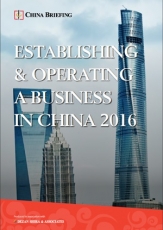The Complexity of Transfer Pricing for Intercompany Services
By Shirley Chu
Editor: Jake Liddle
Most MNCs will charge for services provided to other entities within the same company or business. These are classed as intercompany service fees. Often, while trying to protect its tax base, China’s tax authorities will regularly encounter inconsistencies in transfer pricing for intercompany services, such as lack of access to necessary information due to opaque business structures, unclear rules under Enterprise Income Tax (EIT) laws, and difficulty determining whether selected transfer pricing methods for services comply with the arm’s length principle. Companies found guilty of these inconsistencies can be penalized by China’s tax authorities, making it essential to understand the country’s regulations connected to intercompany services.
Transfer pricing analysis of intra-group services
While China’s transfer pricing regulations do make provision for a selection of intercompany services, guidance is limited to a select amount of company structures, and lacks a wider analysis for services provided by the Chinese subsidiaries of MNCs. Tax authorities have also traditionally upheld that fees charged for intercompany services by parent companies are not deductible for CIT under EIT law.
 RELATED: Tax and Compliance Services from Dezan Shira & Associates
RELATED: Tax and Compliance Services from Dezan Shira & Associates
Guidance on intra-group services from a transfer pricing perspective can be obtained from guidelines provided by the OECD, which highlight two issues that should be observed. Firstly, whether intra-group services have been provided. A service is defined as an activity which provides an entity with economic or commercial value which enhances its commercial position. This can be determined by whether an independent enterprise would pay for an activity (service) provided by an outside entity, or if it could have sourced it in-house.
Secondly, whether services were charged under the arm’s length principle. The OECD guidelines note that the CUP or cost plus methods are the most suitable for intercompany services. Once an appropriate base rate is determined, a percentage mark-up will typically be added to calculate the total value of the service charge.
China’s position on intercompany services
Guoshuifa [2008] No. 863 stipulates that intercompany service fees should be calculated by the arm’s length principle. Furthermore, the 2016 transfer pricing regulations specify that service-related payments should be categorized into a single line item as “service payments”, and that China’s tax authorities will examine the provider and recipient of services, their specific contents and necessity, method of conducting, as well as how both parties benefit from the services. Assessment of who benefits from the services is particularly important for taxpayers, as tax authorities pay special attention to discerning service and royalty payments and the supporting documents disclosing this information.
|
|

 Establishing & Operating a Business in China 2016
Establishing & Operating a Business in China 2016
Establishing & Operating a Business in China 2016, produced in collaboration with the experts at Dezan Shira & Associates, explores the establishment procedures and related considerations of the Representative Office (RO), and two types of Limited Liability Companies: the Wholly Foreign-owned Enterprise (WFOE) and the Sino-foreign Joint Venture (JV). The guide also includes issues specific to Hong Kong and Singapore holding companies, and details how foreign investors can close a foreign-invested enterprise smoothly in China.
 China Investment Roadmap: the Education Sector
China Investment Roadmap: the Education Sector
In this issue of China Briefing, we navigate through China’s regulatory framework for investment into education, presenting a roadmap for best practices in the industry. We examine the key market information that has driven the industry’s growth, analyze the different investment models that are available for foreign companies, and finally discuss the effect that China’s recently released NGO law will have on foreign investment into education.
 Understanding Mergers & Acquisitions in China
Understanding Mergers & Acquisitions in China
In this issue of China Briefing magazine, we set out to guide foreign investors through the mergers and acquisitions process, from initial market research, to set-up procedures and regulatory hurdles, and finally through important due diligence considerations. With experience in China’s M&A market since 1992, Dezan Shira & Associates is perfectly positioned to ensure that the M&A is the right investment vehicle for your company’s venture into China.
- Previous Article Betting the Farm: Modernizing China’s Agriculture Sector
- Next Article Q&A: Investing in China’s Elderly Care Industry

 This article is an excerpt from the September issue of China Briefing Magazine, titled “
This article is an excerpt from the September issue of China Briefing Magazine, titled “







